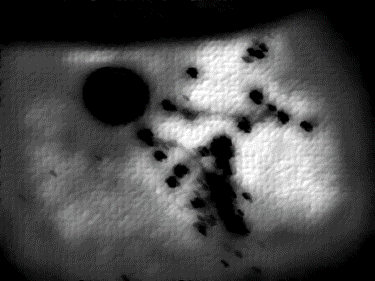
Antonin Artaud coined the term virtual reality in an essay called The Alchemical Theater:
All true alchemists know that the alchemical symbol is a mirage as the theater is a mirage. And this perpetual allusion to the materials and the principle of the theater found in almost all alchemical books should be understood as the expression of an identity (of which alchemists are extremely aware) existing between the world in which the characters, objects, images, and in a general way all that constitutes the virtual reality of the theater develops, and the purely fictitious and illusory world in which the symbols of alchemy are evolved.
Those words were written in the 1930s. Decades later, in the 1980s, virtual reality came to mean computer generated three-dimensional environments entered via head-mounted displays. Such environments depended upon verisimilitude. A limiting word, verisimilitude: "having the appearance of truth."
I first pointed out that Artaud coined virtual reality back when I was doing radio programs dealing with technology in the late 1980s/early 1990s. I incorporated the above Artaud quote into an article I wrote on personal computer pioneer Ted Nelson in 2000. Recently the rise of social networking websites like MySpace drove home Artaud's relevance to me as a web artist, for such sites expanded my virtual sources within the elaborate illusion of the web. Am I saying the web is an illusion? Yes. I consider the web a virtual grid layered upon the very real Internet, which, buttressed by an arcane international complex of political, financial, and legal forces, has become the world's core informational hub. While governments, banks, large universities, multinational corporations feed off the Internet, MySpace encourages its users to share their innermost secrets on the web.
(If you are unaware of the difference between the Internet and the web, click here for a concise description. Click here for my read on the implications of the difference.)
Artaud's theatrical vision of alchemically rendering symbolic realms involved participatory ritual. Dare I say it? His was an interactive vision. Ted Nelson, his kindred spirit, views computers as an extension of human consciousness, thereby making the web not the embodiment of a McLuhanesque global village, but a collective nervous system linking disparate fragments of personalized symbolic stimuli. I believe the HTML fabric comprising the web possesses the alchemical quality of allowing people to shift their personal paradigms according to another's paradigm.

The root image for the animation running above was a photograph by Julie Harnois, who came to my attention after I ran across a comment she left on a MySpace Artaud tribute page. Her photograph struck a chord, inspiring me to try and bring into focus a process of transformation inherent to the alchemical nature of the web.
© 2008 Peter Schmideg